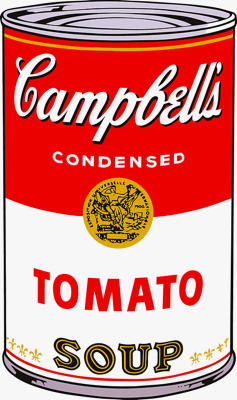Why don’t we buy most energy efficient when it comes to new appliances and products for our homes? It should be a no-brainer for us — energy savings lead to financial savings. Plus we know energy efficient needn’t cost more in the first place (even though we often assume it does). So no more outlay at the front, and more savings later on — and that’s before we factor-in any perceived value from doing the right thing in terms of saving energy.
But we don’t make that choice. Why?
We could continue to rummage around in the murky depths of attitudes, preferences and dominance structures — after all, these are all valid concepts when it comes to determining how consume choices are shaped and acted on.
Or, we could question whether any choices are being made at all.
In other words, it’s not a question of consumer choices being made that are bad, but of no consumer choices being made at all.
For ‘choosing (or not) super energy efficient products’, please read ‘picking (or not) super energy efficient products.’ Yes, it makes a difference.
Edna Ullmann-Margalit and Sidney Morgenbesser wrote a paper back in 1977 that explained the difference between choosing and picking, and argued that the latter happens far more frequently than we’d like to believe. The paper’s been held-up by a choice few academics as being highly influential in terms of prompting us to rethink why we as consumers behave the way we do. We’d like to argue that it’s also very important in the context of energy-related consumer behavior.
‘Choosing’ describes when we select a product over relevant alternatives, because we believe it better meets our preferences. ‘Picking’, on the other hand, is when we end up with a product without knowing if that particular one is best for us.

Tomato soup anyone?
Let’s use an example from the paper. You decide to have tomato soup for lunch tomorrow (good choice). And you decide to have Campbell’s tomato soup (good choice again). So you head off to the supermarket, with two choices having been made (flavour and brand). But when you get to the supermarket, the final behavior from you as a consumer, is one of picking. You look at all the cans of Campbell’s tomato soup…and pick one.
Yes, you could inspect each can for dents, or signs of rust. You could even whip out a mini set of scales and see if one can is a fraction heavier (more soup!). But that’s unlikely. Instead, your ultimate act is one of picking. Ullmann-Margalit and Morgenbesser call this ‘picking proper’.
In this case, preference is replaced by ambivalence, and this likely explains a lot more consumer behavior than we’d like to admit.
There is another form of picking — when even though we have strong preferences for one particular outcome, we’re unable to choose it, because the options are obscured. Think about the classic game-show dilemma of choosing the door with the car behind it (and not the goat): this is picking, but is driven not by our ambivalence towards the ultimate outcome, but rather by a complete inability to choose to meet our preferences. We really want the car, but cannot choose it. Instead, we’re forced — by the design of the game-show in this instance — to pick. Ullmann-Margalit and Morgenbesser call this ‘picking by default’.
Picking is a big deal.
Picking is important when we want to understand why consumers end-up with the products and appliances they do when thinking about energy efficiency. In nearly every situation, it’s a picking by default situation for wanting to get the most efficient product. Yes, we can buy efficient (Energy Star or the EU label does that for us), in the same way we can choose to buy tomato soup or Campbell’s tomato soup. They guide us and help us choose, but only to a point. But the most efficient option is like hunting out the fullest can of soup — practically it’s not an option, rendering our behaviour as one of picking by default.
In other words, asking why we as consumers choose not to buy the most energy efficient products and appliances is likely the wrong question. A better question may be; how can we avoid having to pick?
The Enervee Score — pick no more?
Enervee’s core proposition potentially solves the issue of picking by default. With the Enervee Score (our 0–100 scoring system for every product’s efficiency, relative to all other relevant products in the category), rather than having to pick at the crucial stage of the decision journey, we are giving us as consumers the ability to choose the most efficient.
So the Enervee Score provides a unique service in the market — it removes the need to pick by default. In fact, this potentially redefines the market, as it allows a key component of effective markets to operate — it allows preferences to shape outcomes. In this case, our preference to buy the most efficient to determine our purchase outcome. It sounds obvious, but up until now, the market for energy efficient products and appliances has not been able to function effectively due to behaviors being determined by picking by default. We have had no choice but to pick.
The fact that the Enervee Score can remove picking by default is more than good news. It promises to be a behavioral breakthrough.
But even if the requirement to pick by default can be removed, what if we’re ultimately ambivalent towards the option of having the most energy efficient products in our home? What if kWh savings are not that different to ounces of tomato soup in a can? What if the market is actually driven by behavior that is picking proper?
Picking apart why we pick.
Enervee can also answer this question — this time, using its data can help us understand the fundamentals of consumer picking behavior.
My colleague, Anne Arquit Niederberger has run some analysis on the behavioral and product data generated from Enervee’s Marketplace product (which is currently being used by utilities across the US and Europe), to pick apart our picking behavior. This is one of the advantages to having a data engine and consumer platform that computes daily product-specific efficiency scores for over 40,000 products, and tracks over seventy behavioral moments in each consumer decision journey.
Anne’s analysis has allowed us to understand if adding the Enervee Score attribute to products influences consumer behavior in favor of more efficient products.
If this influence can be seen then we can be confident that the current malaise in efficient choices being made by consumers, is a problem of us being blocked from making the best choice, rather than being ambivalent towards that choice. In other words, it’s a challenge of picking by default, rather than picking proper.
Looking at the data, it’s pretty clear the challenge is one picking by default. As soon as each product has its relative efficiency made visible — i.e. it can be chosen on its efficiency — consumer preference consistently moves towards products which are significantly more efficient than those already carrying energy efficiency rebates. Here are a few examples:
i) Washers with rebates: average Enervee Score of 83. Enervee Score of most viewed washer when on Enervee Marketplace: 94.
ii) Refrigerators with rebates: average Enervee Score 88. Enervee Score of most viewed washer when on Enervee Marketplace: 97.
iii) Freezers with rebates: average Enervee Score 73. Enervee Score of most viewed freezer when on Enervee Marketplace: 95.
The results point repeatedly to the current challenge being one of consumers being forced to pick by default when it comes to energy efficiency. You can read Anne’s full post on the Enervee Blog here, but don’t go there just yet! In short, across each category analysed, removing the picking by default issue reveals a clear and consistent preference for efficiency above and beyond what the market currently marks as efficient (as signalled by a rebate).
This analysis from Enervee has profound implications for how we think about engaging consumers in making energy efficient choices.
It looks as if it’s not a question of educating or raising awareness in an attempt to relegate energy efficiency indifference and apathy. Instead, it’s a case of allowing clearly defined and established preferences the chance to effectively steer choices for their owners.
With Enervee now deployed with utilities, meaning the Enervee Score is in front of over 50million residential households, that’s some welcome steering!
Removing the need pick by default when it comes to buying energy efficient allows the market to function effectively. The Enervee Score does this, allowing us as consumers to choose.
And it seems, when given the option to actually choose, we as consumers choose to choose well.

